We set out at first light, which wasn't all that early given it was approaching the short winter days. We skirted around Denver to avoid any traffic and made good time. We stopped briefly for some breakfast at a rest stop just past Pueblo. Then we continued on into New Mexico.

First light


Hmmm... I wonder where we could possibly be on the map!?

Crossing the state line
We had to stop for gas anyway, but who could resist a visit to Las Vegas!


Holiday decorations were already underway... at it wasn't even December yet!

The main street was filled with charming old structures.

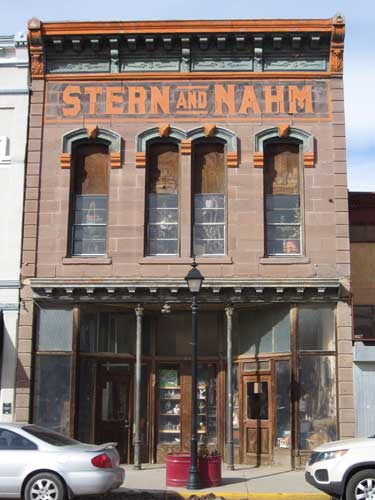
Built in 1885, this building was originally the office for the weekly newspaper before being taken over by the Stern and Nahm dry goods firm in 1897. It is a typical commercial building with large display windows and cast iron columns on the first floor, and pressed and folded sheet metal ornamentation above.

The central park was also surrounded by lovely architecture.
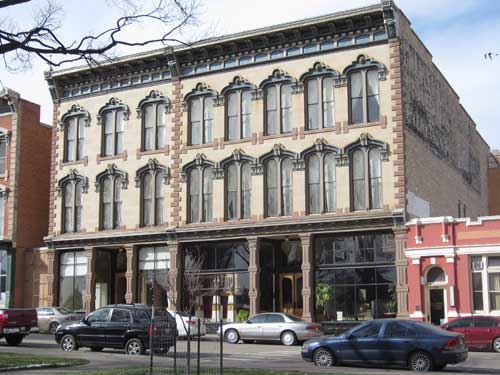


Next stop... Pecos National Historical Park. We popped in the visitor center and enjoyed a nice informative movie, as well as a bit of indoor warmth!
The first pueblo here consisted of just a few rock-and-mud buildings built around 1100. Within 350 years, the village had grown to over 2,000 people living in 5-storied complexes. Times then drastically changed with the arrival of the Spanish in 1540 who built (and rebuilt) churches and missions. By the 1780's, disease, raids and drought decimated the population, and in 1838, the last 17 inhabitants moved away to nearby villages.
In 1965, actress Greer Garson and her husband Col. E.E. Fogelson donated 300 acres of land for the creation of Pecos National Monument. They also built the visitor center in 1983. In 1990, new lands were added, including the ruins of Pecos (Cicuye) Pueblo, and the name changed to a historical park.

The charming visitor center...

... and video room

Greer Garson (1904 - 1996)
The ranger handed us a self-guided tour pamphlet and we ventured out into the somewhat brisk weather along the short mile or so walk around the grounds. The name Pecos is derived from the native word 'payokona,' which means 'the place where there is water.'

Click for a larger view of the map
Pecos was successful because of its location. The valley provided plenty of farmland; there were two year-round rivers; and it had an excellent view and defendable location.
Because of its elevation at 6,900 feet, however, frost comes early. That often meant for a short growing season. So the people also took advantage of wild plants, game (elk, deer, antelope, rabbits) and trade (the pass between the Glorieta Mesa and Sangre de Cristo Mountains was a wesll-established trade route).


Brrrr!

The surrounding wall served as a sort of city limit.
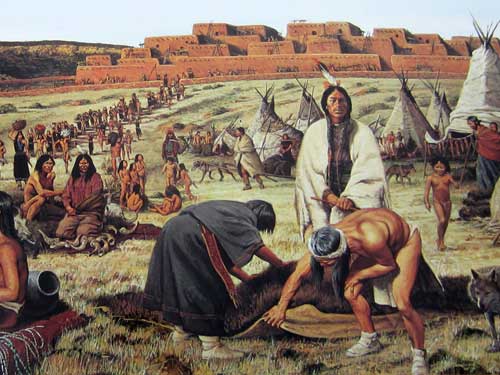
This was also a popular trading place for the Plains Apaches who pitched their tipis outside the walls in the surrounding fields. Click for a larger view.
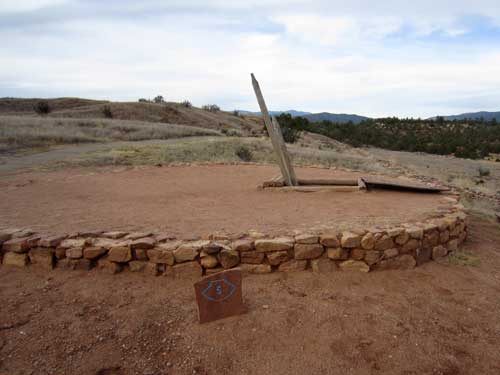
A kiva is a place where the people performed rituals and ceremonies to insure their well-being. They were also workrooms where weaving was done. There are over 20 kivas in Pecos.

Darren decends into the darkness.

A - entry through the roof (which also served as a chimney)
B - a ventilator shaft for fresh air
C - a deflector shield to protect the fire from drafts
D - a fire pit
E - a sipapu (a small hole which symbolizes the people's emergence from the underworld in their beginning)

Inside



Just a random lump? Nope. Much of our information about these people is learned from their trash. For centuries they threw their debris into a giant heap... items such as broker pottery, table scraps, broken tools, and even the dead. This was not meant as disrespect but done merely out of practicality. The surrounding land was comprised of hard rock and hard-packed clay whereas the trash pile was nice, soft earth.

Trash mount excavations from 1914 - 1929
The northern pueblo now looks nothing more than a few gently rolling mounds, but in its heyday it was the site of more than 600 rooms in towering 4- to 5-story buildings. Reports from 1540 state that one could walk across the top of the whole village via upper story porches.


While mostly seen open today, the kivas were always covered.

How it would have looked then

Hints of a once-great city
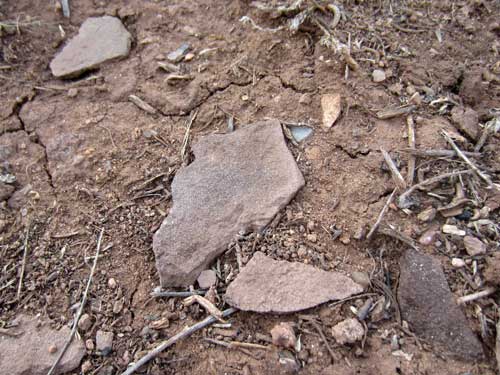
Pottery shards littered the ground.
Two-thirds of the South Pueblo still remains unexcavated. These buildings were also multi-storied. Some rooms were living quarters and sleeping rooms, while others were for storage. Because they were so small, they were easy to heat.


